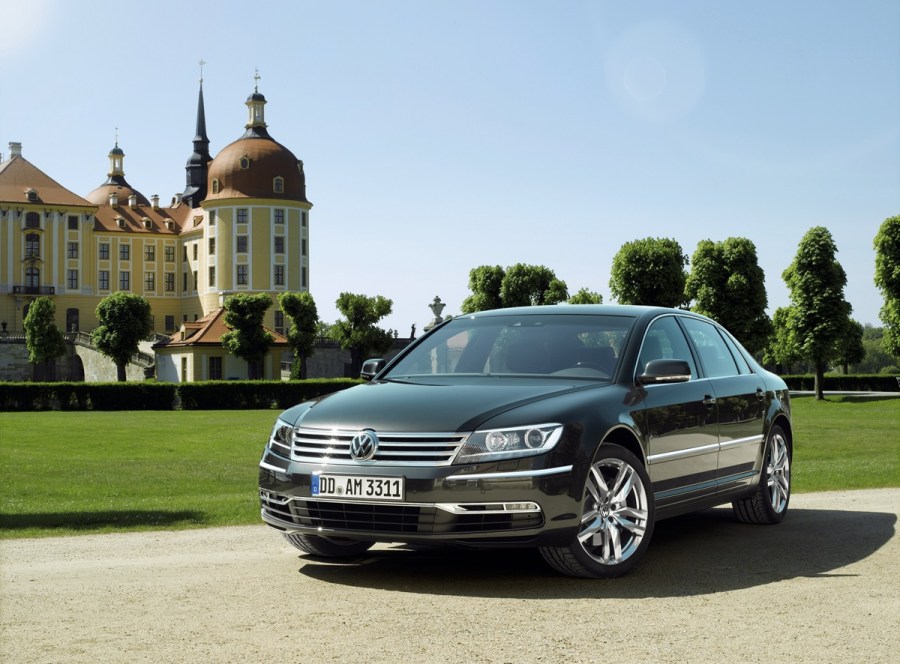This uber-luxurious sedan is an upmarket used bargain, ideal for a VIP project build. Interested? Read this Volkswagen Phaeton buying guide to learn more.
There’s a remarkable but flawed genius underpinning the Volkswagen Phaeton. To those who know what it is, this will always be a car that commands respectful nods or impressed whistles as they roll by – but to the average person on the street, it just looks like a big Passat. And that is essentially what stymied the project from the very beginning… and that’s also what means that you can pick up one of these immensely impressive cars today for a fraction of what it should objectively be worth on the used market. Interested? Everything you need to know is in this Volkswagen Phaeton buying guide.
Volkswagen Phaeton History
So, how did this car come to be such a cult hero? Well, it’s all thanks to the visionary aspirations of Ferdinand Piëch, who was chairman of Volkswagen Group at the time. His grand scheme was for the company to develop a luxurious saloon to rival the very best on offer from the likes of BMW and Mercedes-Benz and, while the Audi A8 already existed to fulfil such a brief, the Phaeton’s USP would be its superlative levels of comfort.
The engineers went all-in, basing the Phaeton on the Group’s D1 platform, which was shared with the Bentley Continental GT and Flying Spur, with engine options at launch encompassing the mighty 414bhp 6.0-litre W12 and 330bhp 4.2-litre V8 as well as the 238bhp 3.2-litre VR6. Piëch’s demands for the project have become the stuff of legend, most notably that the car had to be able to be driven all day at a constant 186mph in 50°C heat while maintaining an interior temperature of 22°C. This, by any reasonable measure, was a car developed without compromise.
Over a hundred Phaeton-specific patents were registered in the development of this model, and the car was naturally jam-packed with impressive features such as the draft-less four-zone climate control, adaptive air suspension with continuous damping control, and radar-adaptive cruise control. What’s more, these were proper coachbuilt specials, with each Phaeton being hand-assembled at the eco-friendly Transparent Factory in Dresden – a state-of-the-art facility built specifically for Phaeton production.
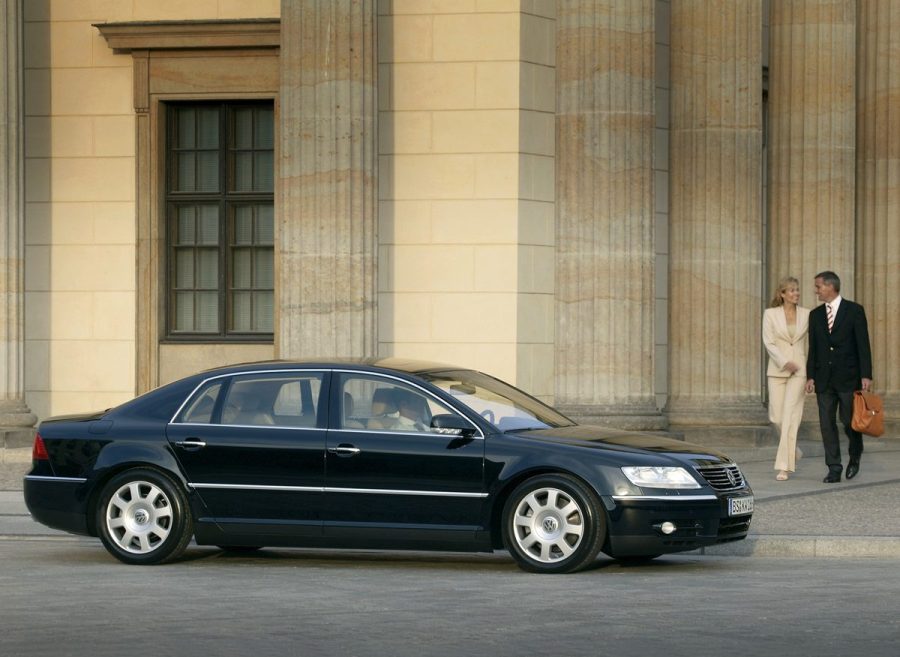
A long-wheelbase version of the Phaeton.
Flawed Genius
The problem for Volkswagen was that an incredible amount of R&D and specialist labor went into each Phaeton, but to the buying public it was too aesthetically similar to a production-line Passat – and sales were disappointing. Only truly popular in China and South Korea, European buyers met the model with a shrug; VW had capacity to build 20,000 examples a year, but over its lifespan the average was more like 6,000 a year. In a production run that lasted fifteen years, 84,253 Phaetons were built in total.
Why solider on for fifteen years? Quite simply because the halo effect was more important than the sales figures. Volkswagen continued to develop and evolve the Phaeton: a ‘Series 2’ (GP1) facelift in 2007 added a 3.0-litre V6 TDI to the range as well as offering interior and exterior revisions including cornering bi-Xenon lights and a new DVD nav system. The ‘Series 3’ (GP2) of 2008 brought in the Euro 5-compliant FSI V6 engine along with further trim revisions and new wheel designs, a reversing camera, and carbon-ceramic brakes for the W12 models.
In 2011, the ‘Series 4’ (GP3) Phaeton got a new front fascia to bring it in line with the design language of other VWs of the 2010s, with LED taillights altered to suit. The car was still offered in standard- and long-wheelbase as before, but the W12 engine option was deleted in all markets except China. And the final evolution, the ‘Series 5’ (GP4) of 2014, made a few minor alterations to the front and rear lights and interior trim. Production officially ended in 2016.
Volkswagen Phaeton Buying Guide
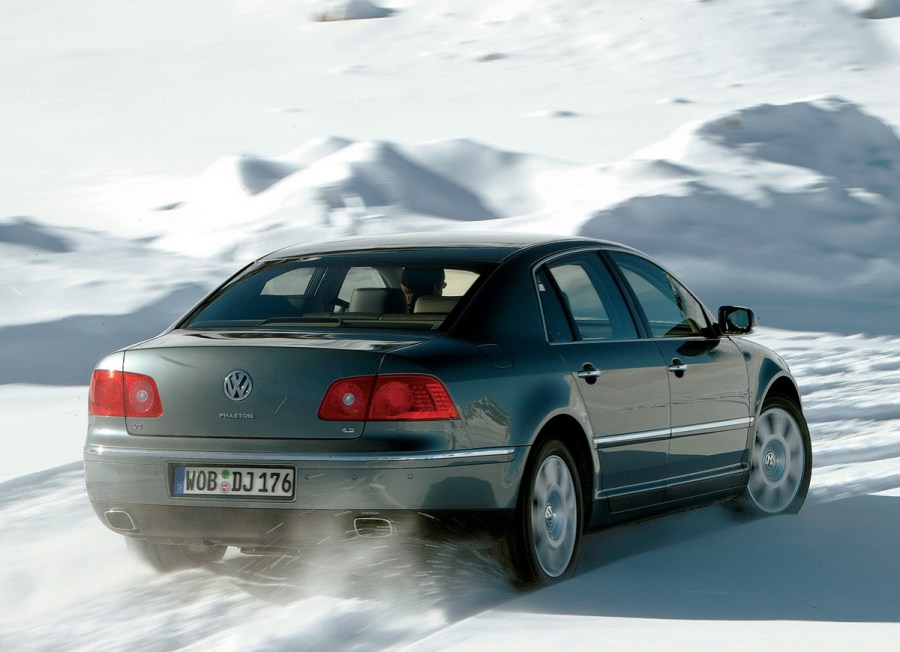
Most common problems
- Corroded power steering lines. These lines are prone to corroding and failing, with failure generally occurring in the passenger wheel arch. The two options to remedy it are either to replace the entire line (which comes with a substantial bill), or splice a new section in – check through the history to see if either of these things have happened.
- Rust in doors and trunk lid. Surprisingly, given the high standard of quality throughout the Phaeton, some examples have suffered blistering paint on the trunk lid and doors which, if left unchecked, can develop into serious rust – so have a good poke around. It’s also worth noting that the plastic trim panels on the door bottoms can sag due to the steel retaining bar behind them corroding and dropping, although this is a relatively easy thing to fix.
- Boot wiring harness failure. The wiring for the taillights travels through a tube into the trunk lid, and this has been known to corrode and fail. DIY fixes are possible if you have the electrical skills, but a full replacement loom will top $500.
Pros and cons
Pros:
- Superlative comfort
- Impressive levels of equipment
- Excellent build quality
Cons:
- Image lacks luxury kudos
- High maintenance costs on W12 models
- Scarcity means you can’t necessarily shop for a particular spec
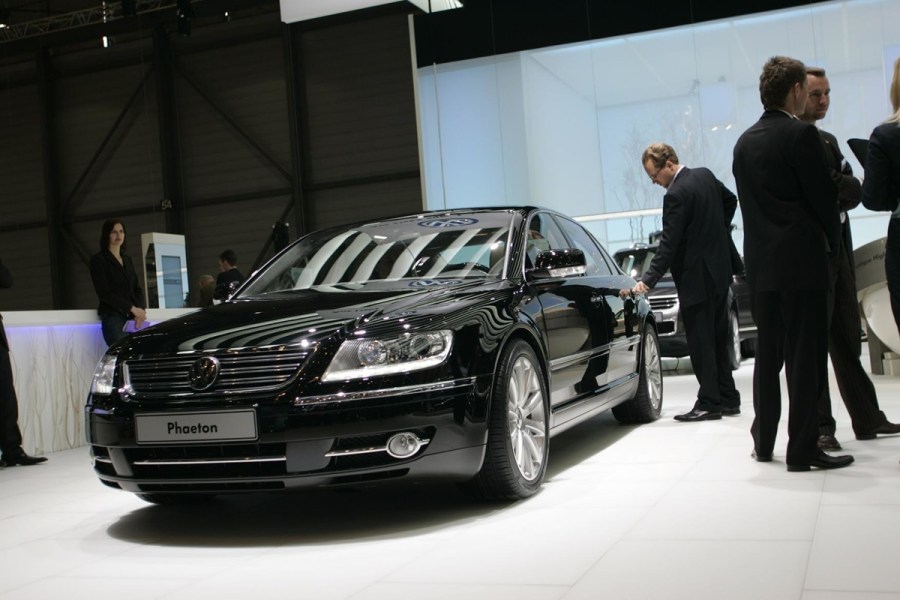
Model timeline
- 2002 – Phaeton launched at Geneva Motor Show
- 2007 – ‘Series 2’ facelift
- 2008 – ‘Series 3’ facelift
- 2011 – ‘Series 4’ facelift
- 2014 – ‘Series 5’ facelift
- 2016 – Production ends
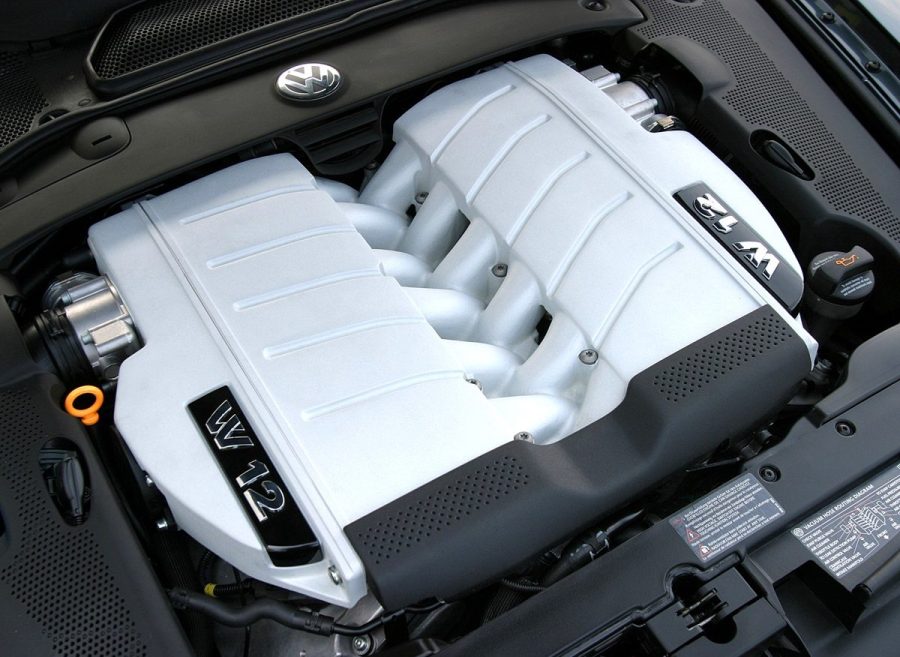
Engine
Engine options were impressive from the start. Launch models were offered with a choice of the 414bhp 6.0-litre W12, the 330bhp 4.4-litre V8, and the 238bhp 3.2-litre VR6. From 2004, the peak power of the W12 unit was upped to 444bhp, and the VR6 was replaced by a 276bhp 3.6-litre variant in 2008. As for the diesels, there was a 222bhp 3.0-litre V6 TDI available from 2004, as well as a 309bhp 5.0-litre V10 TDI. The 3.0-litre V6 TDI was incrementally improved over the years, with power rising to 230bhp in 2007, 237bhp in 2008, and 242bhp in 2014.
Engines are generally robust and dependable, but it’s worth bearing in mind that these high-tech machines had a colossal amount of wiring in them, so fault-finding can be a nightmare if any warning lamps illuminate or systems fail. Phaeton experts recommend approaching an Audi specialist to remedy such issues, as their familiarity with the likes of the Q7 and A8 should pay dividends.
It’s also worth checking how frequently the seller has been using the car and/or when the batteries were replaced: there are two batteries in the boot, and if the car’s left sitting for a long period (or the batteries simply get old) then you may find malfunctions occurring.
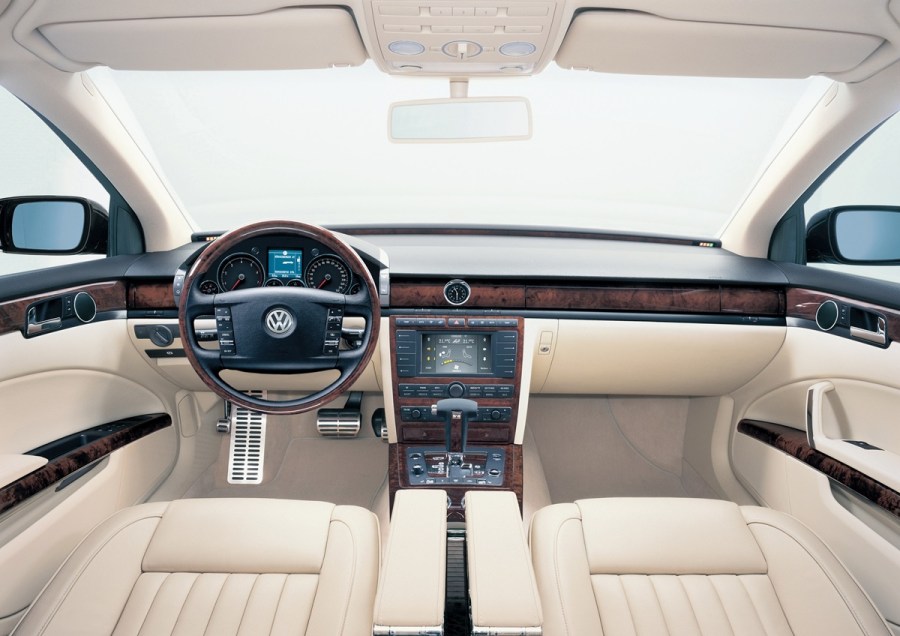
Transmission
There were no manual Phaetons, each one was fitted with an automatic transmission. For almost all models this was a six-speed auto, with the exception of the W12 and the 2003-04 3.2 VR6 which both came with a five-speed. 4motion permanent all-wheel-drive was standard across all models, although the 2003-07 3.2 VR6 could be optioned in a front-wheel-drive configuration. The presence of the EDL is noteworthy too – it stands for Electronic Differential Lock, although it’s not actually a diff lock; it uses wheel speed sensors to brake a wheel that’s travelling significantly faster than the other wheel on the same axle, simulating the effect of an LSD.
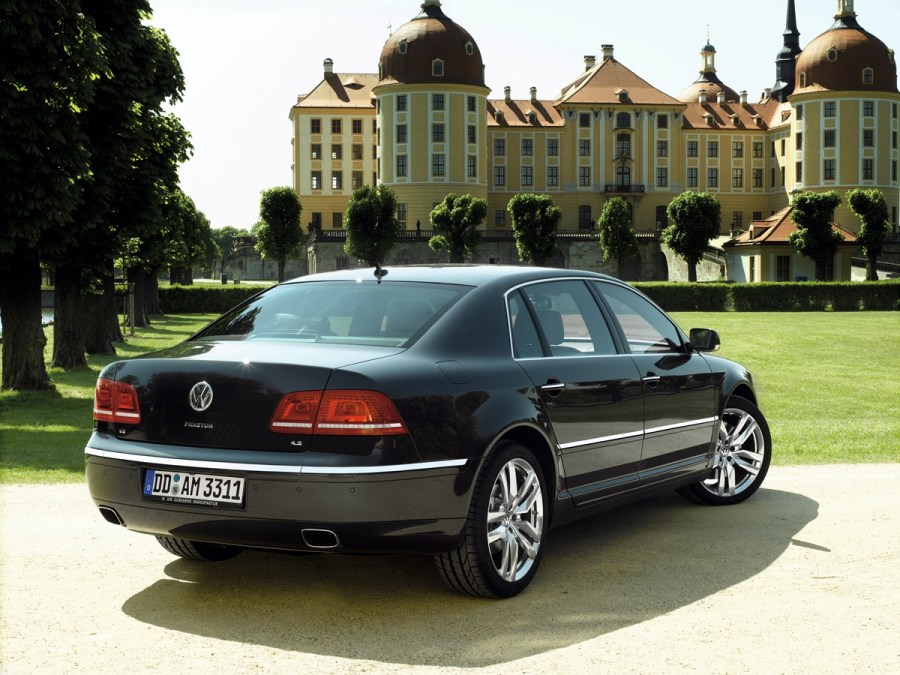
Chassis
Suspension
The suspension setup is very high-end, engineered for comfort and endless wafting mile after mile, with the Phaeton enjoying adaptive air suspension with continuous damping control. It’s worth noting that suspension bushes can and will perish (as is the case with any car), and this is particularly noticeable with the upper and lower arms, leading to a knocking noise. Failure of the suspension airbags and compressor is also something to look out for, particularly given the age of early examples now; it’s by no means common, but if the car is prone to slowly sagging down overnight then that’s an issue that needs addressing.
Brakes
The brakes were substantial as standard, and backed up by a host of safety systems including ABS, Electronic Brakeforce Distribution, Engine Braking Control and Emergency Brake Assist. W12 models were offered with carbon-ceramic front brakes from 2009, which are devastatingly effective but eye-wateringly expensive to replace. Indeed, given the huge cost of replacement carbon ceramic discs, it’s useful to note that there are many aftermarket brake upgrade options for the Phaeton from the likes of D2 and K-Sport.
Wheels
Launch models came with either 7.5×16”, 7.5×17” or 7.5×18” alloys with an offset of 40 and a PCD of 5×112. These dimensions remained throughout the model’s lifespan, with wheel design options changing with each facelift.
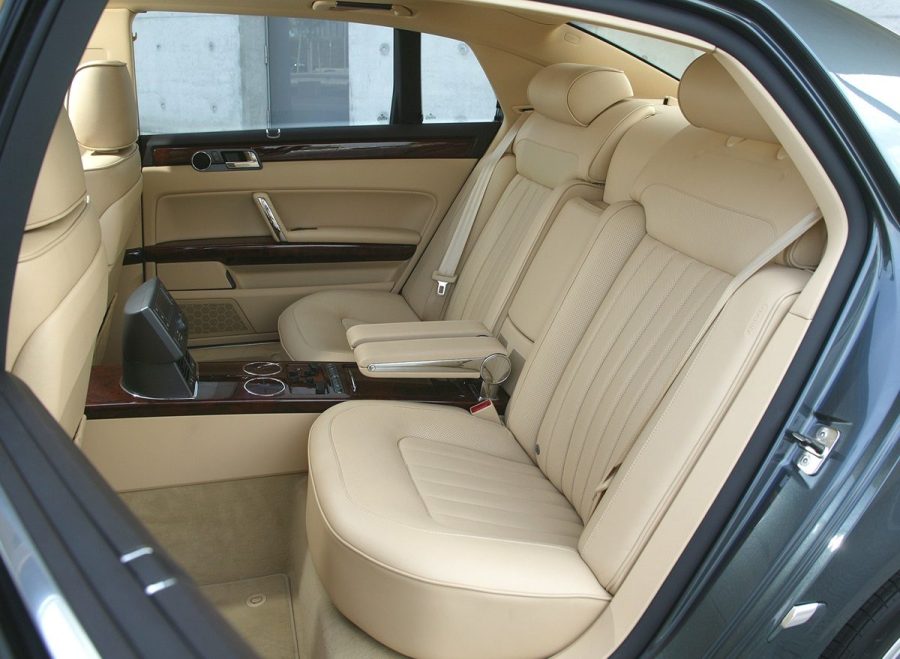
Interior
The cabin of the Phaeton is something truly special, as it was conceived from the outset to be wonderfully comfortable – so if you’re climbing in expecting to find yourself in a big Passat, prepare to be surprised and impressed.
The GP1 model had its infotainment system upgraded from being CD- to DVD-based, and the GP2 saw this upgraded again to a touchscreen interface. The GP3 brought in a new steering wheel design, while the runout GP4 got gloss black cabin trim along with a touchscreen remote control for rear passengers to operate the climate control and infotainment.
Interiors are generally hardwearing and robust, with the only real concern being potential water leaks in the front footwells. The Phaeton has a keyless entry and start system, called KESSY, the module for which is under the carpet in the passenger footwell. The problem is that if there’s any water ingress – commonly caused by blocked sunroof drains – and that water gets into KESSY, it could cost over £1,000 to remedy. So make sure there’s no leaf debris in those drains!
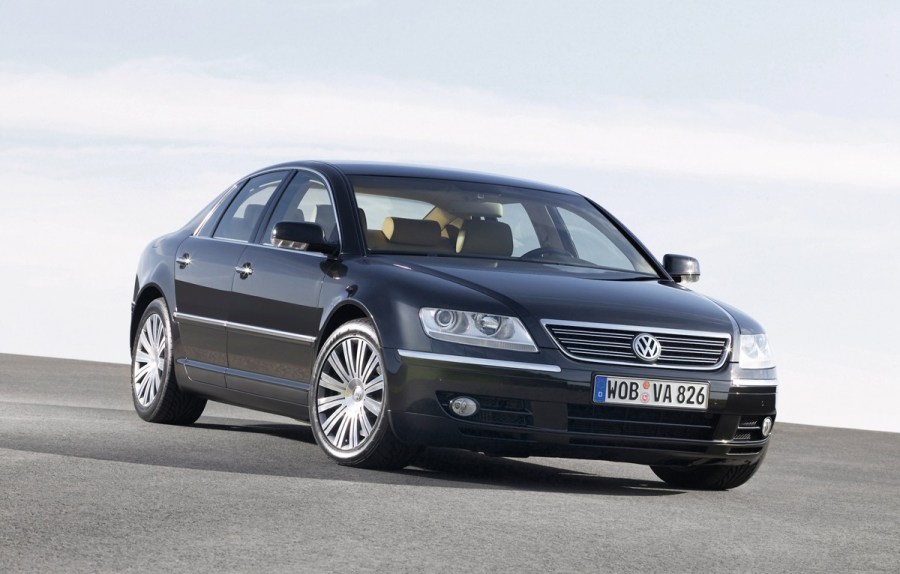
First-generation Phaetons represent huge bargains.
Prices
Given the leisurely nature with which the Phaeton sold, it’s unsurprising to find that there aren’t a huge amount of used ones available for sale at any given time; indeed, at the time of writing there were only a couple of dozen or so on the market in the UK. But that’s not to say you can’t be picky – available examples fall approximately into three distinct groups: the high-end examples that have been fastidiously maintained, the well-used runabouts, and the slightly knackered ones that have been run on the cheap. Avoid the latter and you should be onto a winner.
Prices start under £3,000 for an early 3.0 TDI or 3.2 VR6 car, rising to £9,000 for a tidy Series 3 (GP2), with late-model GP4s topping £11,000. Interestingly, given the low numbers of available cars, there appears to be little price premium for the more powerful W12 and V10 TDI models, with cars instead priced on mileage and condition.
It’s comparatively much harder to buy a Phaeton in the US. North American VW dealers stopped importing it in 2006, meaning that only the first-generation model is available. High-mileage money-pits are comfortably less than $10,000, but good quality examples can cost anywhere between $15,000-$22,500.

